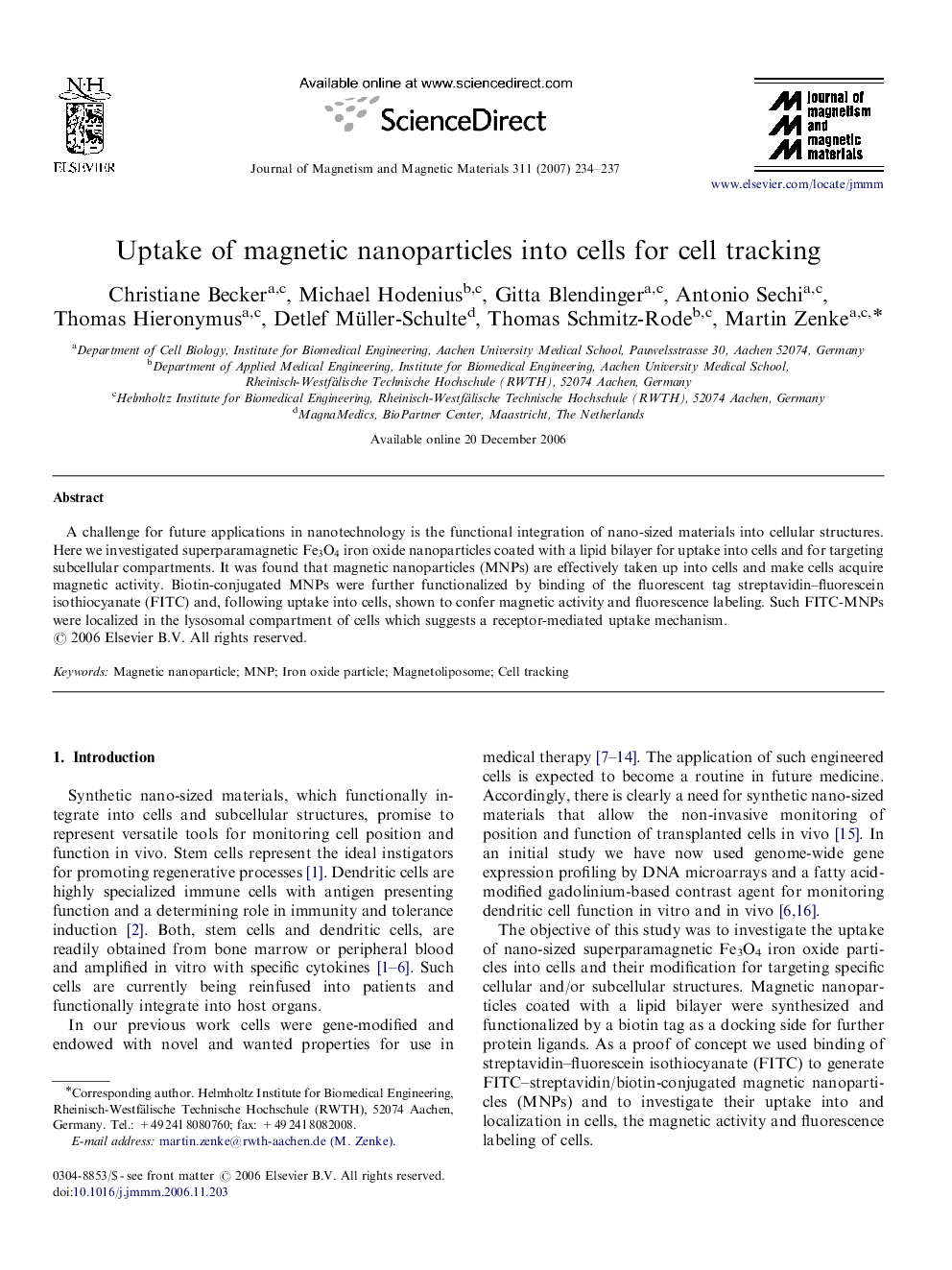| Article ID | Journal | Published Year | Pages | File Type |
|---|---|---|---|---|
| 1804187 | Journal of Magnetism and Magnetic Materials | 2007 | 4 Pages |
A challenge for future applications in nanotechnology is the functional integration of nano-sized materials into cellular structures. Here we investigated superparamagnetic Fe3O4 iron oxide nanoparticles coated with a lipid bilayer for uptake into cells and for targeting subcellular compartments. It was found that magnetic nanoparticles (MNPs) are effectively taken up into cells and make cells acquire magnetic activity. Biotin-conjugated MNPs were further functionalized by binding of the fluorescent tag streptavidin–fluorescein isothiocyanate (FITC) and, following uptake into cells, shown to confer magnetic activity and fluorescence labeling. Such FITC-MNPs were localized in the lysosomal compartment of cells which suggests a receptor-mediated uptake mechanism.
